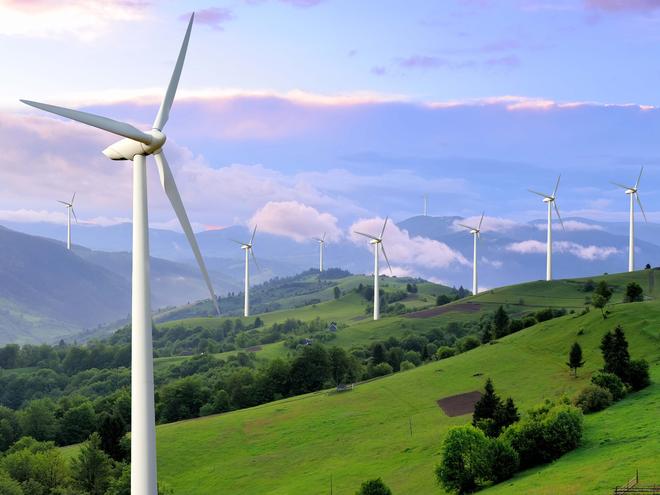BLM Review Shows Coal Companies Taking Advantage of Taxpayers
Wednesday, January 11, 2017
Read moreDedicated To People, The Planet, and All Its Inhabitants – Since 1996

Wednesday, January 11, 2017
Read more
.jpg?1484754422)
Earth’s surface temperatures in 2016 shattered all previous record highs since modern record keeping began in 1880. Much of the warming is attributed to climate change.
Read moreD.C. Superior Court Denies Handsome Brook’s Motion to Dismiss, Finding Suit Adequately Alleges Company’s False “Pasture-Raised” Claims
For immediate release: January 11, 2017
Contact:
Katherine Paul, Organic Consumers Association, 207-653-3090
Contact:
Natalia Lima, Animal Legal Defense Fund, media@aldf.org, 201-679-7088
As part of our landmark 16-study series and ongoing work in measuring methane emissions, we previously published a paper that compared and reconciled top-down (airborne-based measurements ) with bottom-up (emissions inventory, using ground-based measurements) emissions.
This paper found that 1% of natural gas production sites accounted for 44% of total emissions from all sites, or 10% of sites 80% of emissions; emission estimates were based on facility-wide (site-based) measurements. Sites or equipment that produce disproportionate shares of total emissions are often called “super-emitters”. A big question that remained was what caused some sites to become a super-emitter; this remained a “black box” without additional knowledge about which components or operational conditions within a site could trigger the high-emissions.
In a paper published today in Nature Communications, we zero-in or “open the black boxes” to understand and characterize super-emitters. We look at the emissions from all the equipment and operations present at production sites, and ask which ones could produce emissions at a magnitude and frequency indicative of the expected super-emitting behavior.
Crucially, this new paper compares site-based emission estimates to component-by-component aggregations of sources of emissions from production sites. We find that this new component-based emissions estimate is significantly lower (one third) than the site-based estimate previously reported in the Barnett synthesis study (where this site-based estimate agreed with the flyover estimate).
It’s important to note that while the study took place in the Barnett because of the rich data sets available, this behavior is expected across the US (and even internationally).
By examining this discrepancy, here are three things we learned about methane waste:
Further Discussion
Because our new work tells us that super-emitter sites are characterized by abnormal behavior that is unlikely to persist indefinitely, we expect that different sites will be in the high-emitting group at different points in time. Industry claims that most super-emitters are sites with liquid unloadings or tank flashing, but these routine operating conditions do not explain the number of high emitting sites at any moment in time. Our new work tells us that these emissions are coming from unintended malfunctions throughout natural gas development and production.
Additionally, the EPA’s Inventory, which is based on component-level emissions data, is significantly lower than actual methane emissions, due to the omission of super-emitter data from production sites.
Specific sites could be affected by abnormal conditions resulting in their being a super-emitting site at varying points in time. As a consequence, rather than looking to control emissions from a few sites, minimizing emissions requires monitoring approaches that enable efficient and timely responses to the unpredictable nature of when and where a super-emitter will be located.
Current standards for intermittent methane leak detection and repair will continue to miss many of these super-emitting sites. We must have an effective program to continuously monitor for methane waste.
Monday, January 9, 2017
Read moreBy Jonathan Camuzeaux
New Risky Business Report Finds Transitioning to a Clean Energy Economy is both Technologically and Economically Feasible
In the first Risky Business report, a bi-partisan group of experts focused on the economic impacts of climate change at the country, state and regional levels and made the case that in spite of all that we do understand about the science and dangers of climate change, the uncertainty of what we don’t know could present an even more devastating future for the planet and our economy.
The latest report from the Risky Business Project, co-chaired by Michael R. Bloomberg, Henry M. Paulson, Jr., and Thomas F. Steyer, examines how best to tackle the risks posed by climate change and transition to a clean energy economy by 2050, without relying on unprecedented spending or unimagined technology. The report focuses on one pathway that will allow us to reduce carbon emissions by 80 percent by 2050 through the following three shifts:
1. Electrify the economy, replacing the dependence on fossil fuels in the heating and cooling of buildings, vehicles and other sectors. Under the report’s scenario, this would require the share of electricity as a portion of total energy use to more than double, from 23 to 51 percent.
2. Use a mix of low- to zero-carbon fuels to generate electricity. Declining costs for renewable technologies contribute in making this both technologically and economically feasible.
3. Become more energy efficient by lowering the intensity of energy used per unit of GDP by about two thirds.
New Investments Will Yield Cost Savings
Of course, there would be costs associated with achieving the dramatic emissions reductions, but the authors argue that these costs are warranted. The report concludes that substantial upfront capital investments would be offset by lower long-term fuel spending. And even though costs would grow from $220 billion per year in 2020 to $360 billion per year in 2050, they are still likely far less than the costs of unmitigated climate change or the projected spending on fossil fuels. They’re also comparable in scale to recent investments that transformed the American economy. Take the computer and software industry, which saw investments more than double from $33 billion in 1980 to $73 billion in 1985. And those outlays continued to grow exponentially—annual investments topped $400 billion in 2015. All told, the United States has invested $6 trillion in computers and software over the last 20 years.
This shift would also likely boost manufacturing and construction in the United States, and stimulate innovation and new markets. Finally, fewer dollars would go overseas to foreign oil producers, and instead stay in the U.S. economy.
The Impact on American Jobs
The authors also foresee an impact to the U.S. job market. On the plus side, they predict as many as 800,000 new construction, operation and maintenance jobs by 2050 would be required to help retrofit homes with more efficient heating and cooling systems as well as the construction, operation and maintenance of power plants. However, they would be offset by a nearly 34 percent loss in the coal mining and oil and gas sectors, by 2050, mainly concentrated in the Southern and Mountain states. As we continue to grow a cleaner-energy economy, it will be essential to help workers transition from high-carbon to clean jobs and provide them with the training and education to do so.
A Call for Political and Private Sector Leadership
Such a radical shift won’t be easy, and both business and policy makers will need to lead the transition to ensure its success. First and foremost, the report asserts that the U.S. government will need to create the right incentives. This will be especially important if fossil fuel prices drop, which could result in increased consumption. Lawmakers would also need to wean industry and individuals off of subsidies that make high-carbon and high-risk activities cheap and easy while removing regulatory and financial barriers to clean-energy projects. They will also need to help those Americans negatively impacted by the transition as well as those who are most vulnerable and less resilient to physical and economic climate impacts.
Businesses also need to step up to the plate by auditing their supply chains for high-carbon activities, build internal capacity to address the impacts of climate change on their businesses and put internal prices on carbon to help reduce risks.
To be sure, this kind of transformation and innovation isn’t easy, but the United States has sparked technological revolutions before that have helped transform our economy—from automobiles to air travel to computer software, and doing so has required collaboration between industry and policymakers.
We are at a critical point in time—we can either accelerate our current path and invest in a clean energy future or succumb to rhetoric that forces us backwards. If we choose to electrify our economy, reduce our reliance on dirty fuels and become more energy efficient, we will not only be at the forefront of the next technological revolution, but we’ll also help lead the world in ensuring a better future for our planet.
9 January, 2017 – Evidence of Antarctic ice sheet melting and sea level rise almost 15,000 years ago raises alarm over current climate change dangers.
The post Antarctic past points to sea level threat appeared first on Climate News Network.
Read more

Globally, tens of thousands of animals suffer in factory farm-like conditions where they are raised for their skins and furs, but producers need markets to sell their wares. Above, a mink in the wild. Photo by Alamy
We’ve seen some extraordinary gains in the United States for animals in recent years, but India has more than kept pace, particularly since Humane Society International opened an office there five years ago. Working alongside local groups, our HSI team has just succeeded in persuading authorities to ban the import of the skins of exotic . . .
The post More gains in India, including on the trade in exotic animal skins and fur appeared first on A Humane Nation.


Today 630 companies and investors called on Washington to accelerate the low-carbon economy in the United States and stand strongly behind the Paris Agreement, our first truly global plan to combat climate change.
Read more

The animal-based circus looks and feels archaic. We now know about the endless privation for animals living in near constant confinement or tethered to chains. Photo by Alamy
It was the second thunderbolt from Ringling Bros. in the span of two years – a little more than a flash of time in the company’s 146-year history, but as dramatic and sensational as one could imagine. On Saturday night, during a long holiday weekend when people aren’t paying as much attention to the news . . .
The post Ringling announcement an indicator of broader shift toward animal protection appeared first on A Humane Nation.